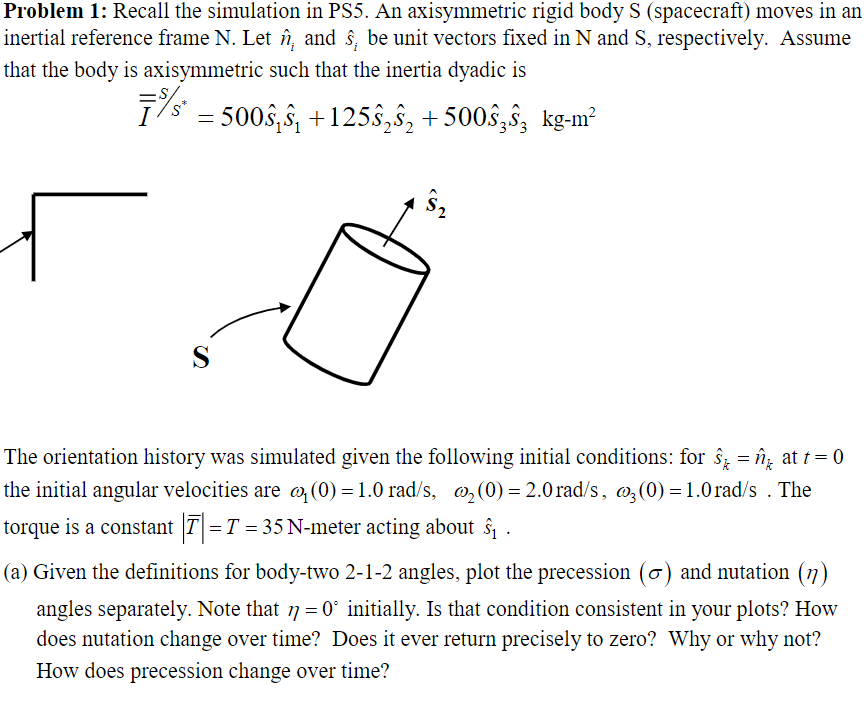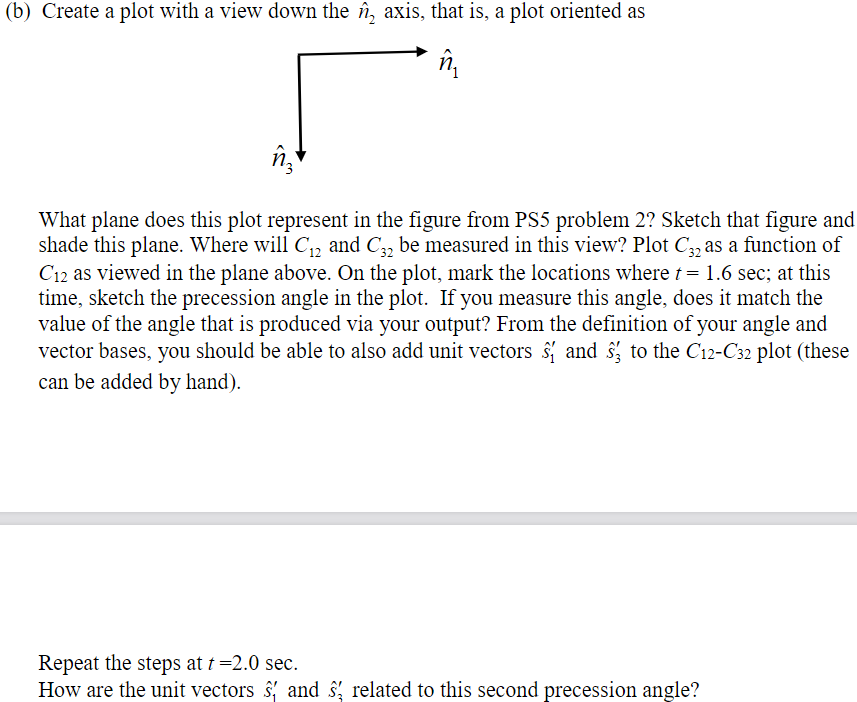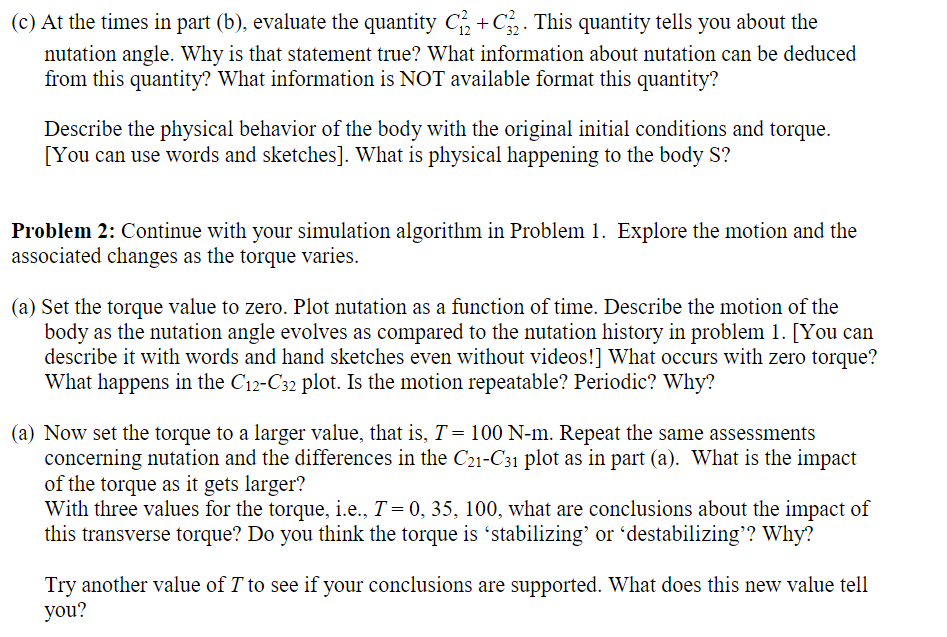Answered step by step
Verified Expert Solution
Question
1 Approved Answer
Problem 1: Recall the simulation in PS5. An axisymmetric rigid body S (spacecraft) moves in an inertial reference frame N. Let , and ,



Problem 1: Recall the simulation in PS5. An axisymmetric rigid body S (spacecraft) moves in an inertial reference frame N. Let , and , be unit vectors fixed in N and S, respectively. Assume that the body is axisymmetric such that the inertia dyadic is 7%* = 500 +125 +500 kg-m $2 S The orientation history was simulated given the following initial conditions: for = ^ at t = 0 the initial angular velocities are c (0) = 1.0 rad/s, 2(0) = 2.0 rad/s, 3(0) = 1.0 rad/s. The torque is a constant |T| = T = 35 N-meter acting about . (a) Given the definitions for body-two 2-1-2 angles, plot the precession () and nutation (7) angles separately. Note that 77 = 0 initially. Is that condition consistent in your plots? How does nutation change over time? Does it ever return precisely to zero? Why or why not? How does precession change over time? (b) Create a plot with a view down the axis, that is, a plot oriented as What plane does this plot represent in the figure from PS5 problem 2? Sketch that figure and shade this plane. Where will C2 and C32 be measured in this view? Plot C32 as a function of C12 as viewed in the plane above. On the plot, mark the locations where t = 1.6 sec; at this time, sketch the precession angle in the plot. If you measure this angle, does it match the value of the angle that is produced via your output? From the definition of your angle and vector bases, you should be able to also add unit vectors and to the C12-C32 plot (these can be added by hand). Repeat the steps at t=2.0 sec. How are the unit vectors ; and related to this second precession angle? (c) At the times in part (b), evaluate the quantity C+C32. This quantity tells you about the nutation angle. Why is that statement true? What information about nutation can be deduced from this quantity? What information is NOT available format this quantity? Describe the physical behavior of the body with the original initial conditions and torque. [You can use words and sketches]. What is physical happening to the body S? Problem 2: Continue with your simulation algorithm in Problem 1. Explore the motion and the associated changes as the torque varies. (a) Set the torque value to zero. Plot nutation as a function of time. Describe the motion of the body as the nutation angle evolves as compared to the nutation history in problem 1. [You can describe it with words and hand sketches even without videos!] What occurs with zero torque? What happens in the C12-C32 plot. Is the motion repeatable? Periodic? Why? (a) Now set the torque to a larger value, that is, T = 100 N-m. Repeat the same assessments concerning nutation and the differences in the C21-C31 plot as in part (a). What is the impact of the torque as it gets larger? With three values for the torque, i.e., T=0, 35, 100, what are conclusions about the impact of this transverse torque? Do you think the torque is 'stabilizing' or 'destabilizing'? Why? Try another value of T to see if your conclusions are supported. What does this new value tell you?
Step by Step Solution
There are 3 Steps involved in it
Step: 1

Get Instant Access to Expert-Tailored Solutions
See step-by-step solutions with expert insights and AI powered tools for academic success
Step: 2

Step: 3

Ace Your Homework with AI
Get the answers you need in no time with our AI-driven, step-by-step assistance
Get Started


